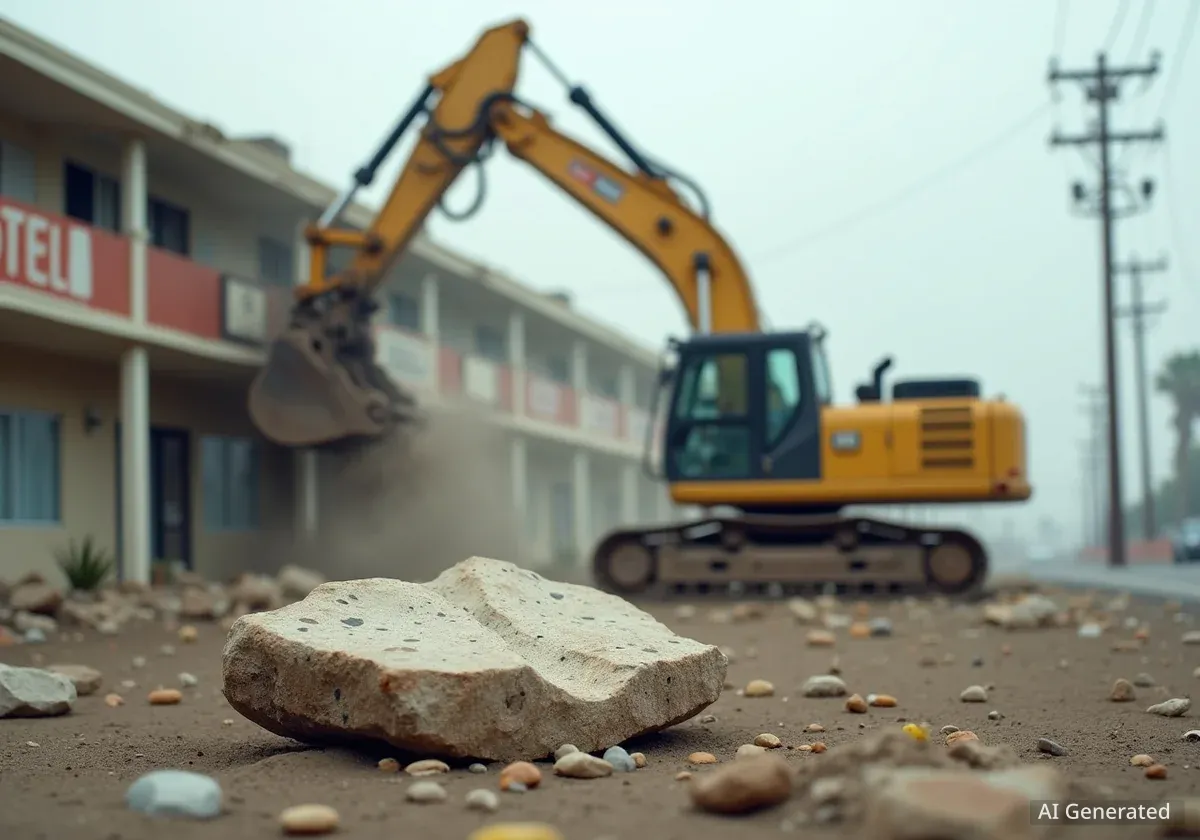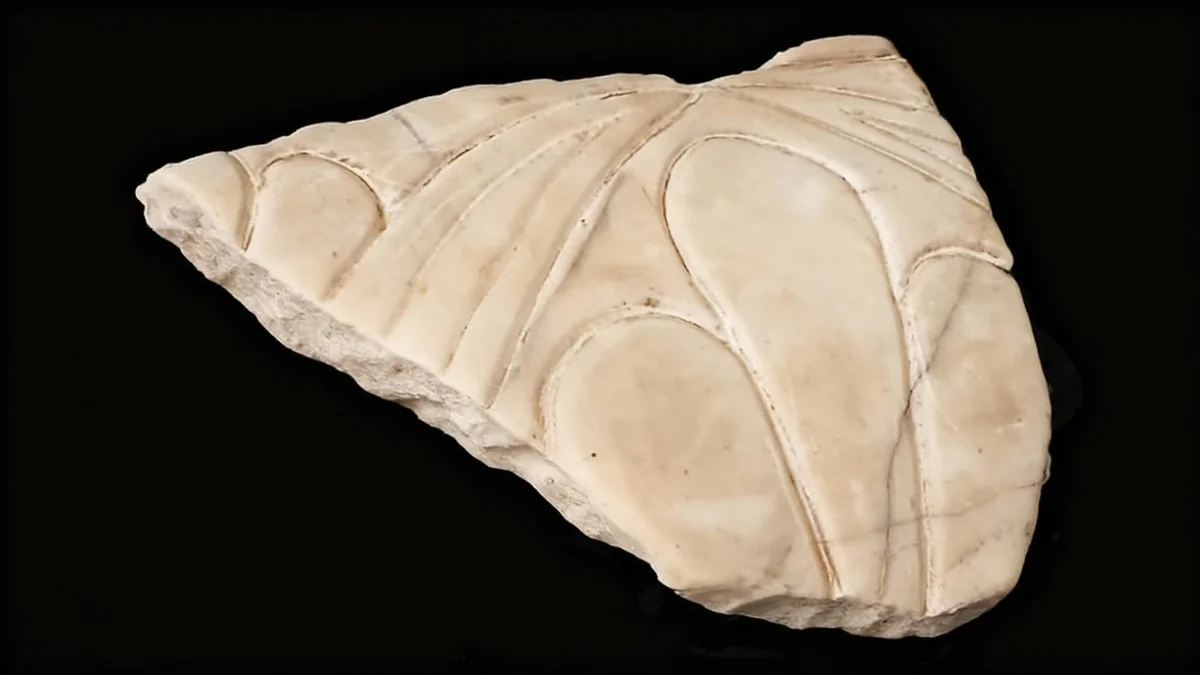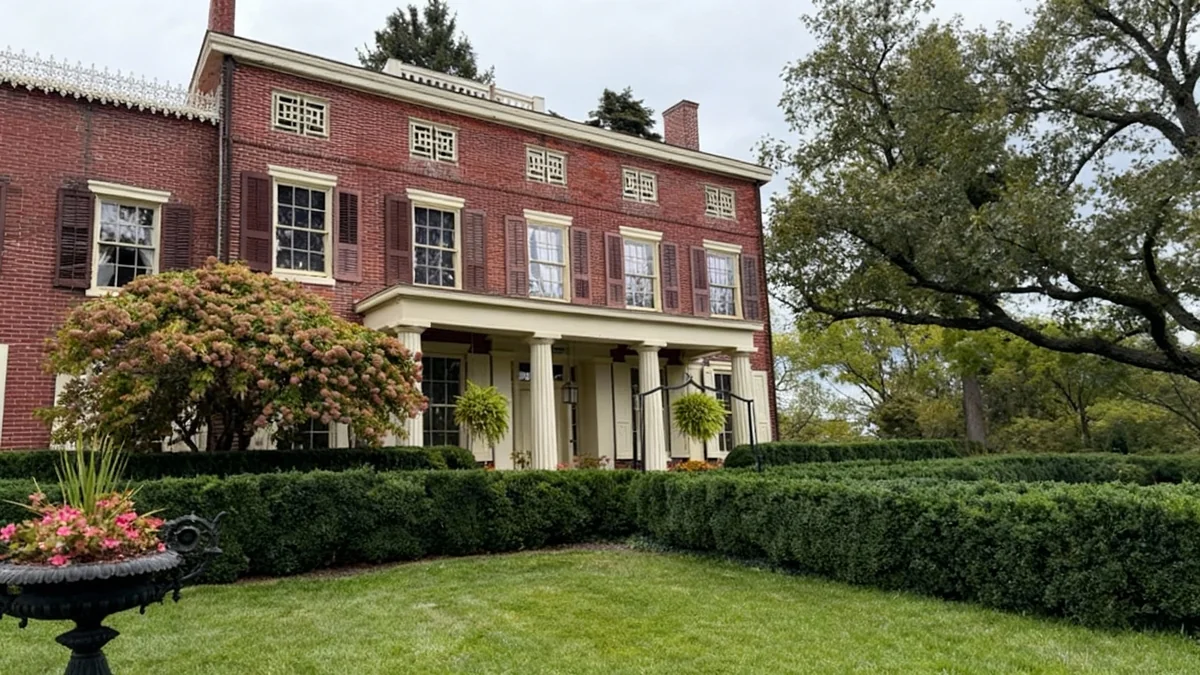A historic building located along the famous Route 66 in Springfield, Missouri, has been demolished. The Rancho Court Motel, known for its distinctive Giraffe Stone architecture, received a demolition permit from the city after being declared a nuisance. This action marks the loss of what many believed was one of the last examples of this unique construction style along the iconic highway.
Key Takeaways
- Historic Rancho Court Motel on Route 66 in Springfield, MO, has been demolished.
- The city declared the building a nuisance before granting the demolition permit.
- The motel was one of the last known examples of Giraffe Stone architecture.
- Experts consider the demolition a significant loss for architectural history.
Demolition Follows Nuisance Declaration
The city of Springfield issued a demolition permit for the Rancho Court Motel. This permit was granted after officials declared the property, located at 1544 East Kearney, a nuisance. The declaration is a standard part of the process for approving such demolitions within city limits.
The motel had stood as a landmark on Route 66 for many years. Its removal highlights ongoing changes to the landscape of the historic highway, where many older structures are being lost to redevelopment or neglect.
Fact: Route 66 Significance
Route 66, established in 1926, is one of the original highways in the U.S. Highway System. It stretched from Chicago, Illinois, to Santa Monica, California, covering 2,448 miles. The road became a symbol of American mobility and opportunity, inspiring countless stories, songs, and films. Many small businesses, including motels, diners, and gas stations, sprang up along its path, catering to travelers and contributing to its unique character.
Loss of Unique Giraffe Stone Architecture
The Rancho Court Motel was particularly notable for its architectural style, known as Giraffe Stone. This method of construction is characterized by the use of large, irregularly shaped rocks on the building's exterior. These stones create a textured and visually distinct facade.
According to historical records, this style was once more common. However, it has become increasingly rare over time. The motel was considered one of the final remaining examples of this construction technique along Route 66.
"The demolition is a sad loss," stated John Sellars, executive director emeritus of the History Museum on the Square. "The building was one of a kind, and it's unlikely any new structures will be built in the same architectural style."
Architectural Heritage Along Route 66
The preservation of architectural styles like Giraffe Stone is important for maintaining the historical integrity of Route 66. These unique buildings tell a story about the era in which the highway flourished. They reflect the ingenuity and design trends of mid-20th century American roadside architecture.
Many communities along Route 66 are working to protect and restore historic buildings. These efforts aim to attract tourists who seek to experience the nostalgia and history of the 'Mother Road'. However, challenges such as maintenance costs and modern development pressures often complicate these preservation goals.
Context: The Evolution of Route 66
Route 66 saw its peak popularity in the 1930s to 1960s. The construction of the Interstate Highway System in the latter half of the 20th century led to a decline in traffic on Route 66. Many towns and businesses that relied on the highway faced economic challenges. While some sections were decommissioned, a strong movement exists today to preserve its remaining segments and historic sites, recognizing its cultural and historical value.
Impact on Local History and Tourism
The demolition of the Rancho Court Motel represents a tangible loss for Springfield's local history. Buildings like this served as visual markers of the city's past, connecting current residents and visitors to earlier generations.
For tourism, the loss of unique architectural examples can diminish the appeal of Route 66 as a heritage destination. Tourists often seek authentic historical experiences. The distinctiveness of structures like the Rancho Court Motel contributed to that authenticity.
Efforts to document and celebrate the remaining historical sites along Route 66 continue. These initiatives aim to ensure that future generations can learn about the highway's rich legacy, even as some physical landmarks disappear.
Looking Ahead: Preservation Challenges
The challenge for many Route 66 communities is balancing preservation with economic development. Maintaining older buildings can be costly. Property owners often face difficult decisions regarding restoration versus demolition, especially when structures are deemed unsafe or in disrepair.
Local historical societies and preservation groups often advocate for adaptive reuse. This approach involves renovating historic buildings for new purposes while retaining their original architectural character. Such strategies can help extend the life of these important structures.
- The number of original Route 66 motels has significantly decreased over decades.
- Community groups regularly identify and campaign for the protection of remaining historic sites.
- Funding for preservation projects often comes from a mix of private donations, state grants, and federal programs.
The fate of the Rancho Court Motel serves as a reminder of the ongoing struggle to preserve the historical fabric of America's iconic roadways.





